If you’ve ever found yourself pondering the perplexing question, “Do deer eat tomatoes?” while tending to your bountiful farm, you are not alone, dear farmer. The capacious stomachs of these majestic creatures can present a formidable challenge to the well-being of your cherished tomato plants. Fear not, for I shall delve into the captivating world of deer dining habits and bestow upon you invaluable tips to safeguard your precious tomato treasures from their ravenous appetites.
Unveiling the Culinary Curiosities of Deer
Ah, the enigmatic deer, renowned herbivores with a penchant for grazing upon an assortment of crops, trees, grasses, and verdant vegetation. While tomatoes, with their nutrient-rich profiles and aqueous allure, may entice these graceful creatures, they do not reign as their ultimate culinary indulgence. In a whimsical twist of fate, deer often find themselves irresistibly drawn to more tantalizing delights, such as tender lettuce, succulent strawberries, and luscious sweet corn. Their discerning palates seek out the most delectable morsels, leaving tomatoes to be merely an option in their expansive feast of flavors.
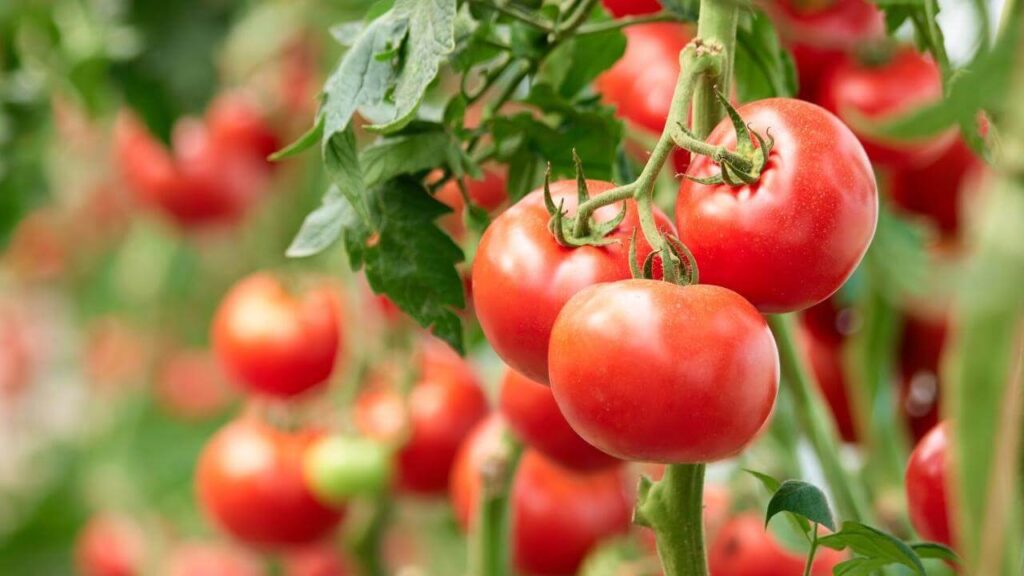
The Chronicles of Tomato Temptation
But, pray tell, why do deer succumb to the allure of tomatoes? The answer lies within their eclectic dietary habits. These remarkable beings possess an innate adaptability, tailoring their food choices to the ever-changing seasons. During the spring and summer months, deer revel in the consumption of leaves, stems, and fruits, relishing in the plethora of botanical offerings. As autumn’s embrace ensues, they set their sights upon the bountiful cornucopia of nuts and corn. With winter’s icy breath, they gracefully transition to nourishing themselves on buds, twigs, and the bark of trees and shrubs. Should your tomatoes ripen and entice their taste buds during their feeding time, the temptation may prove irresistible, and your precious fruits may become an unintended delicacy in their grand banquet.
Decoding the Trail of Deer Damage
Be vigilant, dear farmer, for the signs of deer trespass upon your sacred garden are not easily concealed. Allow me to illuminate the unmistakable indicators:
– Rough Bite Marks: The telltale marks left by deer exhibit a distinct ruggedness, a testament to their lower incisors’ dominance.
– Elevated Munching: Behold, the evidence lies higher up the plant! Deer’s lofty stature grants them access to foliage beyond the reach of their terrestrial counterparts.
– Uprooted Plants: Alas, the brute force of these elegant creatures may result in uprooted plants, an unfortunate consequence of their voracious appetites.
– Trampled Surroundings: The haphazard dance of deer hooves upon the fertile ground leaves an indelible imprint, a reminder of their garden escapades.
Should these signs reveal themselves within your garden sanctuary, it is imperative to take swift action to protect your beloved tomato plants from further nibbling escapades.

Tomato Plants: Nature’s Ambrosia or Deer’s Delicate Predicament?
While tomato plants do not harbor inherent toxicity to deer, one must tread cautiously. The leaves and stems contain alkaloids, namely solanine and tomatine, which possess the potential for toxicity in excessive quantities. Fear not, for the levels present in ripe tomatoes remain relatively low, posing little risk to the health of these magnificent herbivores. Nevertheless, it is prudent to safeguard your tomato plants, ensuring a bountiful harvest for yourself while sparing the deer the temptation of indulging in leaves and stems.
Ah, but do be aware, my esteemed reader, that while deer
can enjoy tomatoes without significant health risks, not all creatures share the same fortune. Dogs and cats, for instance, may experience adverse reactions to tomatoes. Therefore, as you shield your precious tomatoes from the deer’s longing gazes, do ensure the safety of your furry companions as well.
A Glimpse into the Gastronomic Adventures of Deer
Deer, steadfast herbivores, traverse the culinary landscape with unwavering dedication. Their discerning palates explore a plethora of offerings, foraging on crops, trees, grasses, vegetation, acorns, and nuts. A grand feast awaits these elegant beings, as they partake in up to 12 pounds of sustenance each day! Let us unravel some of their favored indulgences:
– Acorns, nature’s golden nuggets of delight.
– Aspen, a tree of allure, beckoning with its tender leaves.
– Berry bushes, nature’s sweet jewels, glistening in the sunlight.
– Corn, the golden pillar of sustenance, tantalizingly succulent.
– Goldenrod, a vibrant symphony of color and flavor.
– Honeysuckle, the aromatic nectar that bewitches their taste buds.
– Maple, a tree of splendor, offering sap and foliage.
– Poplar, with leaves that dance upon the wind’s gentle caress.
– Sumac, a crimson crown atop the verdant landscape.
The list, dear reader, extends far beyond these humble offerings, as the deer’s gastronomic choices adapt to the shifting seasons and the bounty within their natural habitat. Should any of these delights grace your garden’s embrace, be mindful that they may serve as an enticing invitation to deer, jeopardizing the sanctuary of your precious tomatoes.
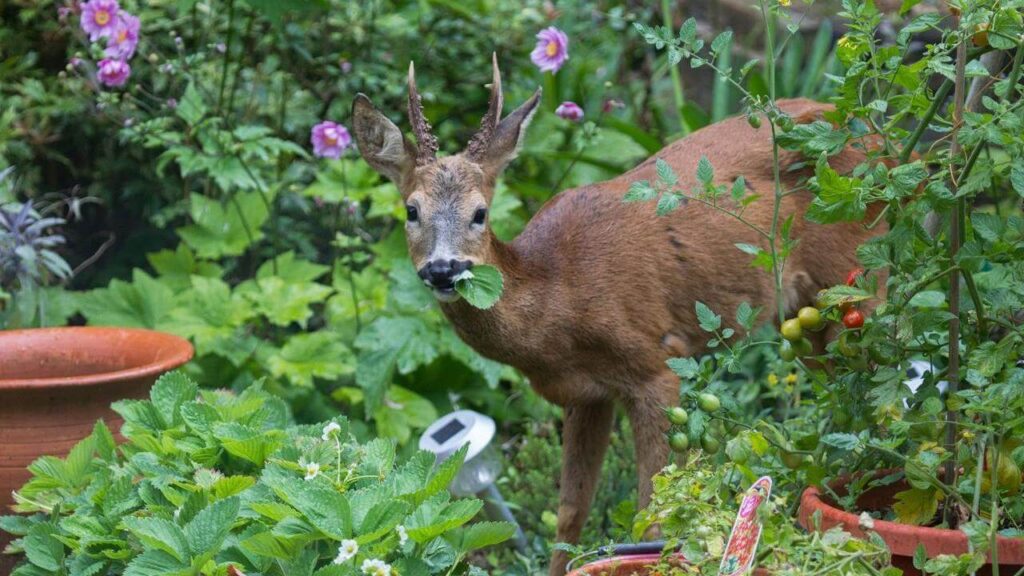
Strategies of Defense: Safeguarding Your Tomato Trove
Fear not, valiant gardener, for a myriad of methods exists to thwart the advances of deer and protect your tomato haven. Allow me to illuminate a few of these formidable strategies:
1. The Guardian Fence: Behold the mighty fence, an essential fortress for every garden warrior. Not only does it fortify against deer intrusion, but it also repels rabbits, pesky digging dogs, and mischievous raccoons. Moreover, the solitude it provides is a boon coveted by gardeners of all ilk. To deter deer with unwavering determination, a fence of no less than 8 feet in height shall suffice.
2. Predator Eyes: Harness the power of optical deception, my intrepid gardener. By adorning your garden with the piercing gaze of predators—coyotes, cougars, bobcats, wolves, and bears—you instill fear in the hearts of deer. These cunning tools mimic the reflective eyes of predators, dissuading deer from venturing near your precious tomato domain.
3. The Cascade of Surprise: Picture this, dear reader—a motion-activated sprayer poised, ready to unleash an unexpected deluge upon any unsuspecting deer or unwelcome intruder. Such an ingenious contraption offers a formidable defense, transforming your garden into a realm of surprise and discomfort for those who dare trespass.
4. Companion Planting: Nature’s allies shall aid you in your quest to repel deer! Introduce plants with pungent scents—chives, garlic, onions, and their aromatic brethren—to form an impenetrable wall of fragrance. These botanical guardians shall deter deer, ensuring the safety of your tomato treasures.
5. Deer-Repellent Sprays: Ah, the power of scent! Harness the aromatic wonders bestowed upon us by nature. Blend water, egg, and chili sauce into a potent elixir, a spray to ward off deer’s unwelcome advances. Coat your tomato plants in this fragrant
shield, deterring the deer with its pungent charm.
6. Ultrasonic Defense: Enter the realm of technology, dear gardener, where ultrasonic deer repellents reign supreme. These ingenious devices emit high-frequency sound waves, imperceptible to human ears but detestable to deer. Safeguard your garden with this harmonious symphony of protection, ensuring both your tomatoes and your tranquility remain undisturbed.

The Harvest of Wisdom: A Bountiful Finale
In conclusion, the age-old inquiry, “Do deer eat tomatoes?” has been unveiled, painting a vivid portrait of the delicate dance between these graceful herbivores and your precious tomato plants. Armed with the wisdom bestowed upon you, dear reader, you can now navigate the realm of deer deterrence with grace and aplomb. Remember, a flourishing garden is not solely a testament to your green thumb but a testament to your ability to harmonize with nature, balancing its wonders and challenges. Embrace the knowledge, employ the strategies, and savor the fruits—nay, the tomatoes—of your labor, secure in the knowledge that your garden shall flourish in harmony with the natural world.
Tomatoes are an important part of many home gardens. If you want to learn more about how to grow tomatoes in grow bags, check out our article on 8 Steps to Growing Tomatoes in Grow Bags.”

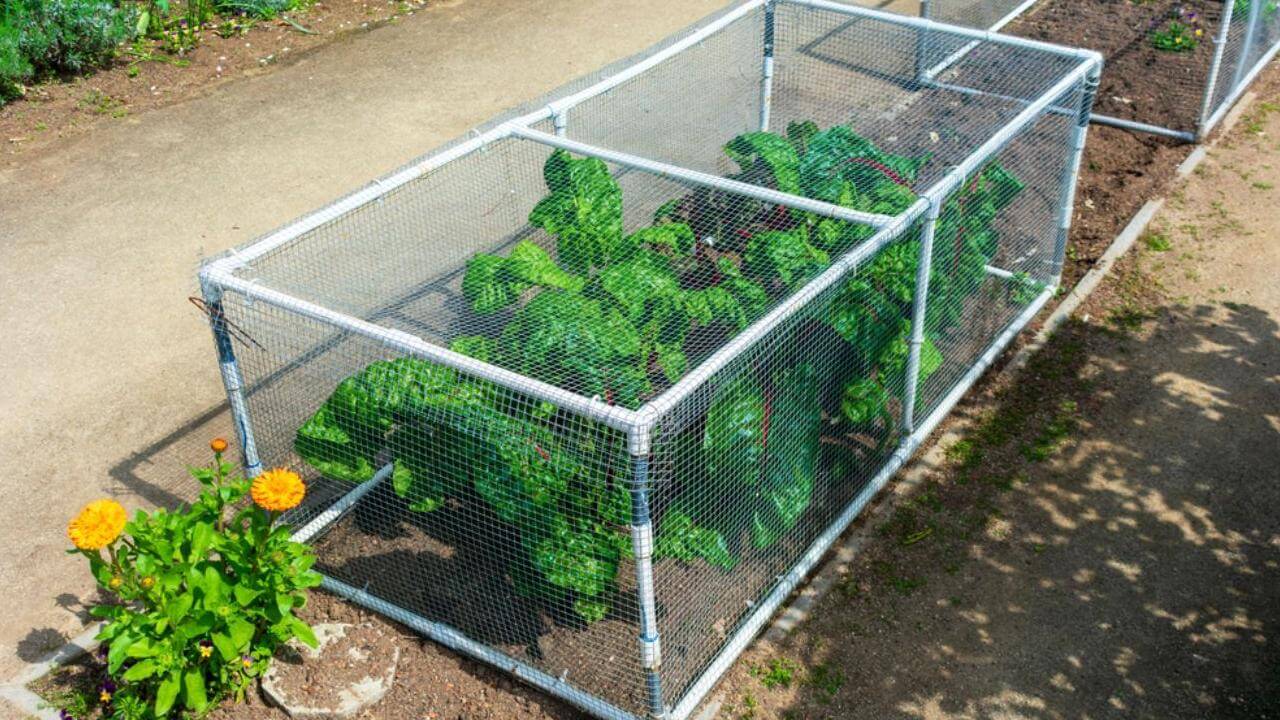
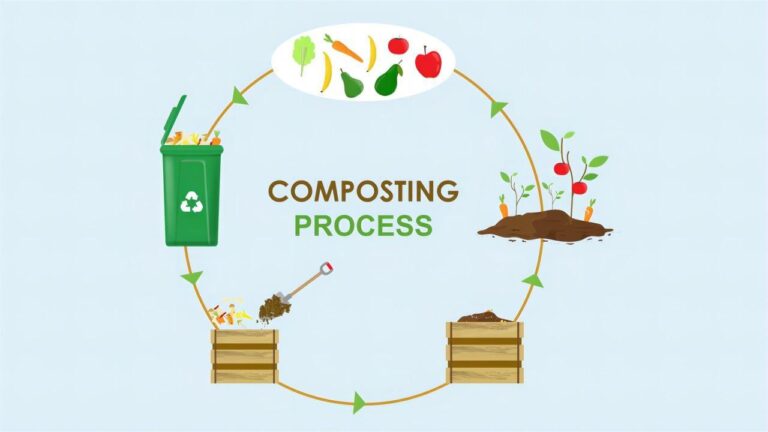
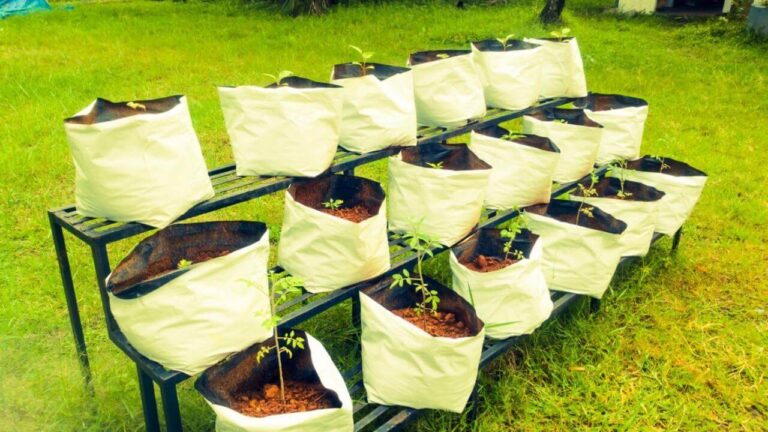
Leave a Comment